Common barberry: beneficial properties, cultivation and care
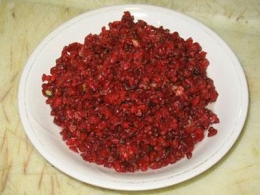
Common barberry has long been used in cooking and folk medicine. Its tart, sour berries are added to sauces and used to make desserts and wines. All parts of the plant are used to prepare medicinal preparations, decoctions and infusions used in folk medicine.
Content:
- Biological features
- Chemical composition and calorie content
- Use in cooking
- Healing properties
- Agricultural technology
Biological features
Common barberry is a deciduous shrub with thorns. It has the ability to branch strongly and rarely exceeds a couple of meters in height. Its thin branches initially have yellowish bark, which turns gray as it ages. The edges of the oblong leaves have spiny cilia. The plant blooms in May-June and is accompanied by a strong aroma. Light yellow flowers are collected in 15-20 pieces in drooping clusters. The ripening of berries lasts from July to October. They have a bright red color, a sour taste, juicy pulp and several seeds. The weight of the fruits usually does not exceed 4 grams.
In the wild, Barberry is found everywhere in the forest-steppe zone of Russia and Ukraine, in the Crimea and the Caucasus. Grows on light and dry forest edges, lawns, mountain slopes, and river pebbles. It is mercilessly destroyed near grain fields, since parasites develop on it, causing rust to appear on cereal crops.The shrub is grown to obtain medicinal raw materials, berries and to create hedges and for decorative purposes. It is an excellent honey plant.
Chemical composition and calorie content
Common barberry contains more than 10 alkaloids, including berberine, columbamine, palmitine, and iatroricin. More than 14% of this plant consists of fruit acids, among which malic acid predominates. Among other acids it should be noted:
- wine;
- amber;
- fumaric;
- coffee;
- cinchona;
- chlorogenic (has the ability to burn fat).
Barberry fruits also contain large amounts of ascorbic acid, sugars, retinol and phenolic compounds, pectins and tannins. Of the microelements contained in them, it is worth noting potassium and magnesium, necessary for the normal functioning of the cardiovascular system, calcium, manganese, iron and silicon.
The calorie content of barberry berries is approximately 30 kcal per 100 grams of product, and they are pure carbohydrates, since they contain neither fat nor protein. Many of us associate the word barberry with the candies of the same name, and not with berries at all, so it will be useful to know that their calorie content is about 10 times higher, since they contain too much sugar.
Use in cooking
Ripe fresh and dried barberries are an excellent addition to meat sauces, pilaf, and marinade for barbecue. The young leaves of the plant successfully replace sorrel, since they are a source of vitamin C, which is especially important in early spring. They make delicious green cabbage soup and wonderful salads. Barberry juice is a worthy alternative to lemon juice. The berries make excellent jam, tasty jelly, and sour marmalade.Tinctures, liqueurs and wines made from barberry have a unique taste, and kvass perfectly quenches thirst.
Healing properties
All parts of the plant are harvested as medicinal raw materials. The alkaloid berberine contained in unripe berries and roots has a choleretic effect and is useful for diseases of the liver and gall bladder. It is used to lower blood pressure and slow heart activity. Tincture of leaves causes uterine contractions and compression of blood vessels, helping to stop uterine bleeding.
A decoction of roots and bark has antimicrobial, analgesic, antipyretic and anti-inflammatory effects. It is used to treat colds and infectious diseases of the respiratory tract. All parts of the plant have a wound-healing effect. Homeopathy recommends barberry for the treatment of kidneys and urinary tract, peptic ulcers, diarrhea, hemorrhoids. Antitumor and antituberculosis drugs are prepared based on various parts of this shrub.
Agricultural technology
Common barberry is a rather unpretentious plant. It can grow in partial shade and even in the shade, but it produces consistently high yields of berries only in a sunny place. It can be grown from seeds, sowing them before winter directly into the soil or in a box, which will be stored in a cool place until spring. Cuttings, dividing the bush or instilling layering are also allowed. When planting, organic fertilizer must be added to the soil. Like all bushes, barberry greatly depletes the soil, so every year in the spring it must be fed with compost or manure, after loosening the soil, and in the fall with superphosphate.To create a hedge, you need to plant bushes at a distance of 0.4 m from each other, for ripening berries - 1.5 -2 m.
The plant needs moderate watering (about once a week) and does not tolerate waterlogging. In spring and autumn, pruning should be carried out to avoid thickening of the bush; old and underdeveloped branches are removed. During the entire growing season, it is necessary to weed and loosen the soil near the bushes. For the winter, in the first years of its life, it is better to cover the plant with dry leaves or spruce branches so that it does not freeze.

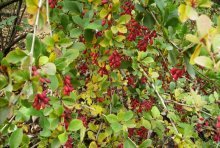
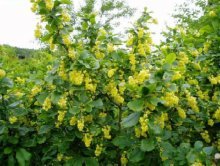
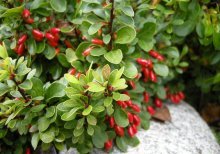
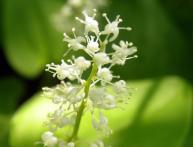
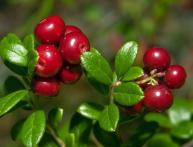
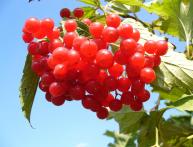
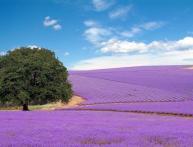
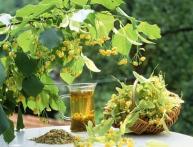
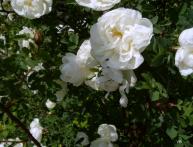

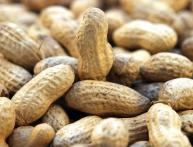
Comments
I have never had to grow barberry myself. It always seemed to me that it grows only in the southern regions. But I’ve been using it as a seasoning for a long time. It’s hard to imagine, for example, pilaf without it.
We found a wild cypress tree in the forest. They put me at home. He is not fussy about caring for him and has settled down well in his new place. You just have to cut it off, otherwise the branches grow quickly and they are very prickly. The berries are sour, but healthy. Everyone should plant such a miracle - a bush.